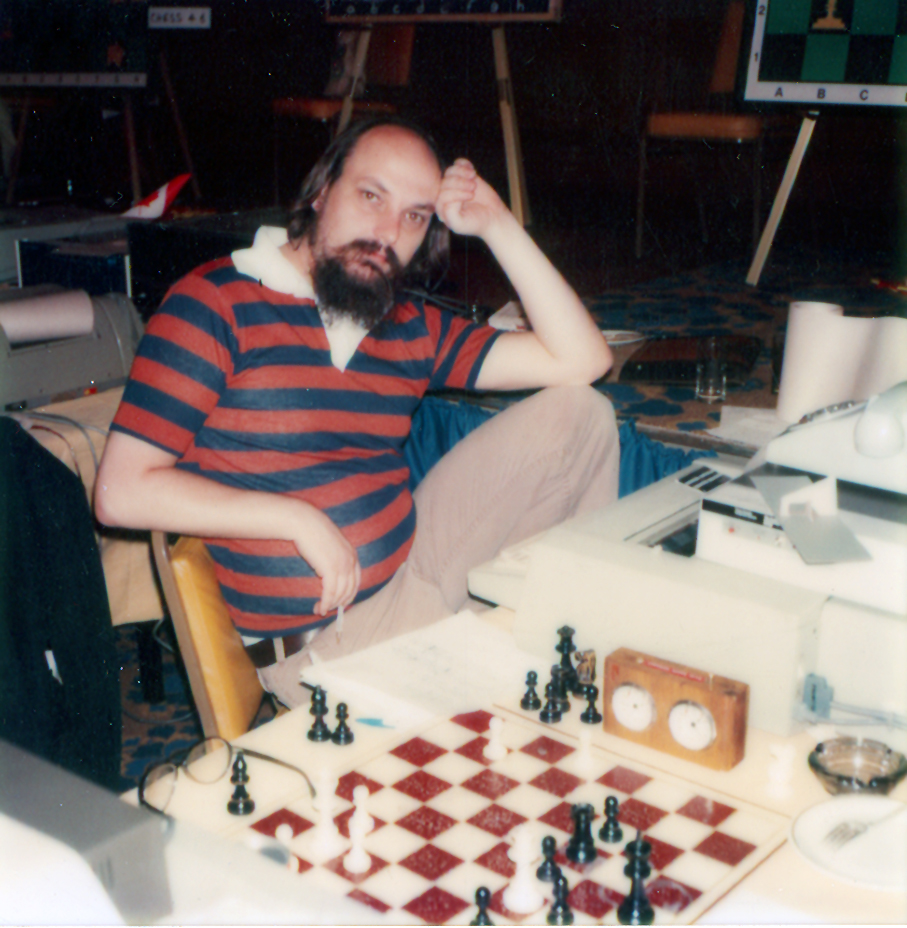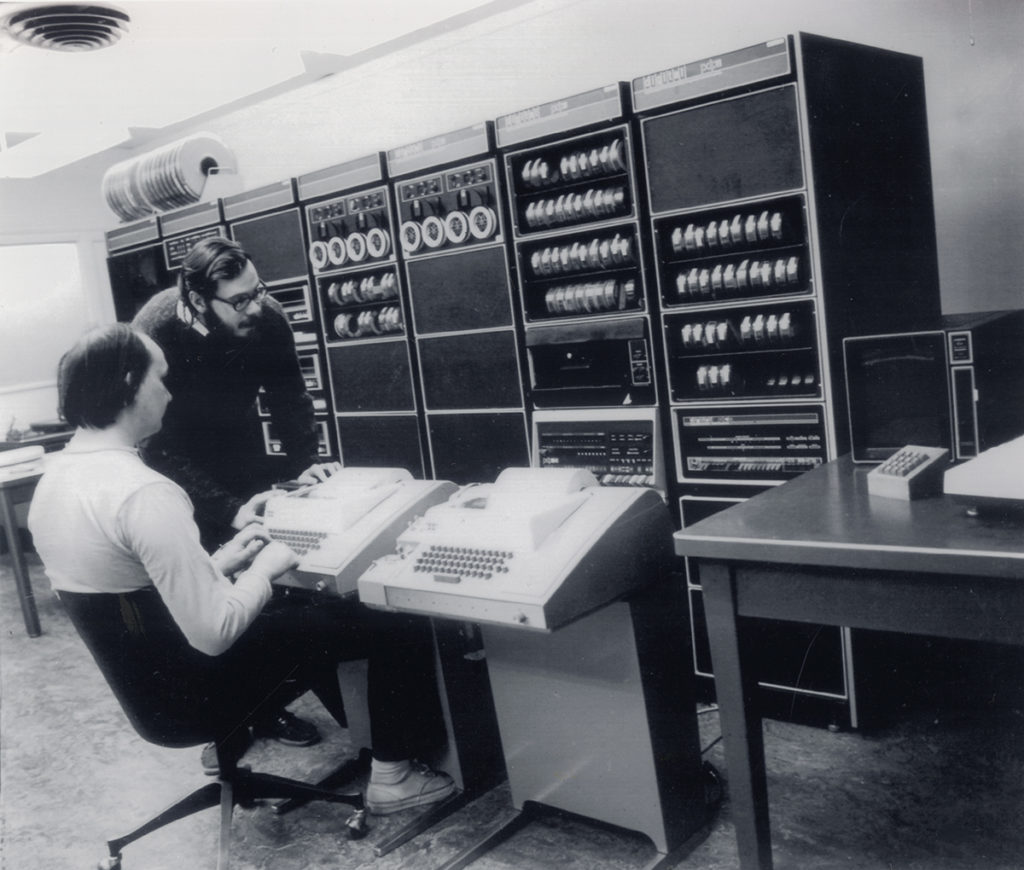| CARVIEW |

A New Oral History with Ken Thompson
Ken just had an absolutely beautiful conception of a program ... that clarity just shines through in the original design of Unix.
— Doug McIroy on Ken Thompson
The Computer History Museum (CHM) is excited to release a new oral history interview with Ken Thompson, one of the world’s foremost programmers and computer scientists. The interview was created in partnership with the Association for Computing Machinery (ACM) in connection with Thompson’s selection for the 1983 A. M. Turing Award, the ACM’s highest prize and one of computing’s greatest honors.
Among many other accomplishments in computing, Thompson was the creator of the Unix operating system, and, with Dennis Ritchie, codeveloped the C programming language. A half-century on from these innovations, it is hard to overstate their importance. Unix-like operating systems pervade our digital world. They are the engines for smartphones (iPhones and Androids), laptops, desktops, servers, and supercomputers alike. There are hundreds of Unix-like operating systems using the Linux kernel animating hundreds of millions of personal computers and servers worldwide. Unix-like Linux variants also power all of the world’s most powerful supercomputers. The programming language C, also more than a half-century on, remains one of the most widely used programming languages globally.
While at the Bell Telephone Laboratories, where Thompson spent most of his career, he earned additional renown for his world championships in computer chess, many using a specialized chess computer he helped to design, and his efforts on the Plan 9 operating system. Later, at Google, Thompson helped create the Go programming language, which has also become one of the top languages in use today.

Thompson at the ACM North American Computer Chess Championship, 1983. https://www.computerhistory.org/collections/catalog/102645360/
It is hard also to overstate the computing community’s estimation of Thompson as a programmer. Doug McIlroy, himself a famed programmer and Thompson’s manager and collaborator at Bell Labs, recalled recently in an oral history with CHM that Thompson was a “most amazing” programmer: “Ken just had an absolutely beautiful conception of a program ... If you read his programming, he doesn’t put in many comments, but you don’t need them. It just reads like a novel ... just unbelievable ... that clarity just shines through in the original design of Unix.”
For all of his accomplishments, Thompson is an intensely private person, rarely giving interviews, making the insights he provides in his oral history all the more valuable. Early in the oral history, he describes some of his hobbies which he pursued as a youth with unusual intensity as his family moved around the United States and internationally as part of his father’s military career.
Ken Thompson discusses his early interests and hobbies.
Chess has been a life-long interest and pursuit of Thompson’s. In this excerpt, he explains how he first came to the game, and how his engagement with it evolved.
Ken Thompson recalls his early involvement with chess.
It was in his junior year studying electrical engineering at Berkeley that Thompson first started using computers, and programming quickly became all-consuming for him, in his words “an addiction.” Remarkably, he was quickly hired on to do all sorts of programming work on the campus and had permission to use the University’s computers as he wished late at night, including the main systems in the computing center.
Ken Thompson on his early experience of programming at Berkeley.
One aspect of Thompson that people may be less familiar with is his sense of whimsy, and his love of practical jokes. An important early episode where colleagues learned this side of his character came just days after he had joined the famed Bell Telephone Laboratories, home to many critical developments in engineering and science. Thompson began raising a baby alligator in his office.
Ken Thompson discusses raising a baby alligator in his office.
At Bell Labs, Thompson’s first major project was working on Multics, a huge effort to create a highly advanced operating system involving Bell Labs, MIT, and General Electric. After Bell Labs pulled out of the effort in 1969, Thompson began contemplating an operating system of his own, although operating systems research was then very much on the outs at Bell Labs. In this excerpt, he describes how his work developed at the end of 1969 into 1970, resulting in his new Unix operating system.
Ken Thompson describes the early development of Unix.

Ken Thompson (seated) and Dennis Ritchie (standing) with the PDP-11 system at Bell Labs. Collection of the Computer History Museum, 102685442.
Once Thompson had his first Unix operating system, his Bell Labs colleague, Dennis Ritchie, became ever more deeply involved in the effort to create a new programming language for use in further developing Unix, and for generally programming with it. This collaboration between Thompson and Ritchie resulted in the C programming language, which Thompson used to implement Unix for their new PDP-11 computer.
Ken Thompson on the development of the C programming language.
When asked about what has made both Unix and C so enduring, Thompson replied that he believed it was the context of the Bell Telephone Laboratories, and its then-environment of largely unconstrained, lavishly funded, curiosity-driven research.
Ken Thompson on the longevity of Unix and C.
The full oral history with Ken Thompson stretches over four and a half hours and covers many other aspects of his life and career, from computer chess to digital audio, from Google Books to the Go programming language, and much more.
Full oral history of Ken Thompson.
Read the transcript of the oral history.
CHM conducted an earlier oral history interview with Ken Thompson in 2005, focused on the subject of computer chess.
Main Image: Ken Thompson, 2024. Still from ACM-CHM Oral History recording.
About The Author
David C. Brock is an historian of technology, CHM's Director of Curatorial Affairs, and director of its Software History Center. He focuses on histories of computing and semiconductors as well as on oral history. He is the coauthor of Moore’s Law: The Life of Gordon Moore, Silicon Valley’s Quiet Revolutionary.
Join the Discussion
Related Articles
View all articlesThe CHM Online Store is here! Shop Now


